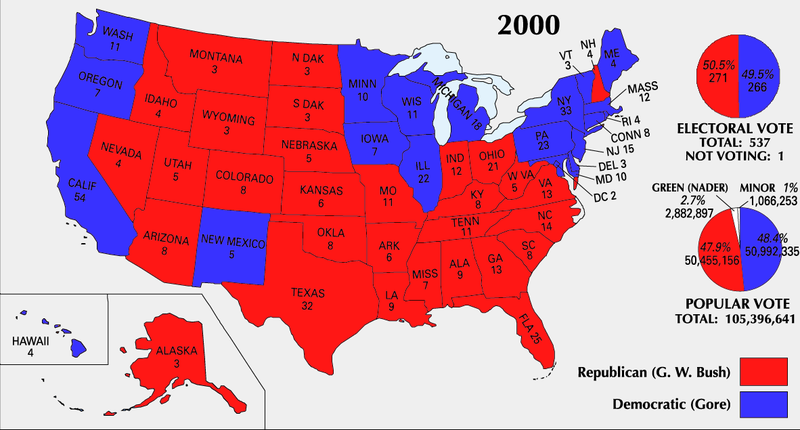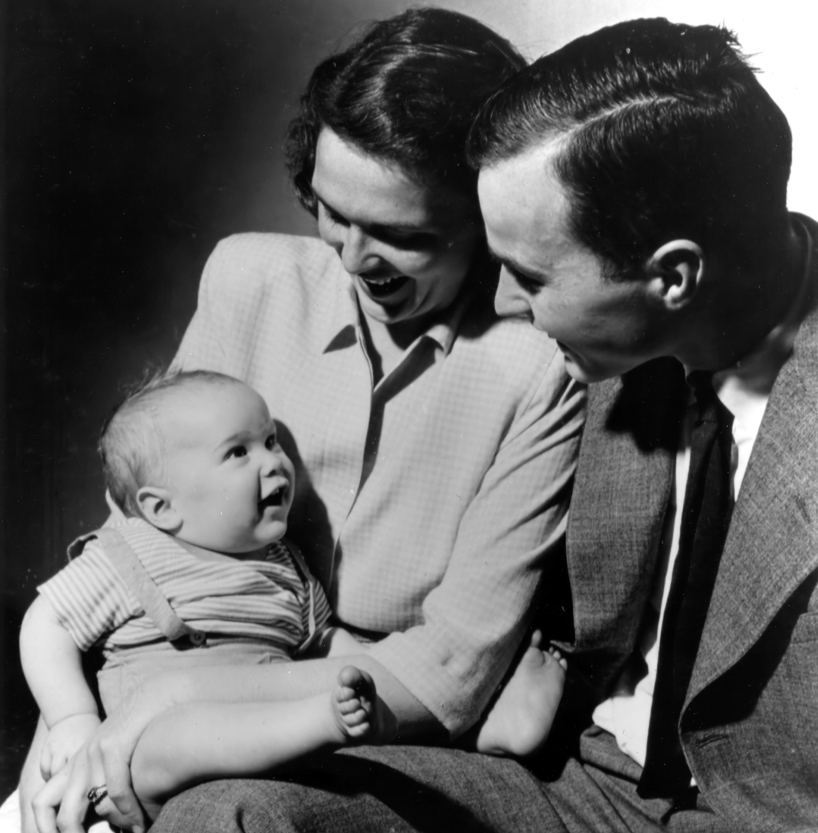
The Disputed Election of 2000
The Disputed Election of 2000
The presidential election of 2000 hinged on the outcome in Florida. First, the television networks said that Democrat Vice President Al Gore had carried the state. Then, the state’s election was considered “too close to call.” Then, the networks declared Texas’s Republican Governor George W. Bush the winner. The presidential election was so close that it took five weeks to determine the winner. Vice President Al Gore carried the nation’s East and West coasts and inland industrial cities, while Texas Governor George W. Bush won much of the Midwest and Plains, as well as the South. Gore gained a half-million more votes than Bush, but Gore lost the Electoral College when he lost Florida. Bush’s official margin in Florida was by 537 votes.

With the presidency hanging on a few hundred votes in a single state, there were lawsuits and requests for recounts. Bitter disputes centered on confusing ballots, missing names from voting rolls, and subjecting minority voters to multiple requests for identification. The punch card ballots posed a major problem—they were vulnerable to voter error. Many ballots were called into question because voters failed to punch a hole all the way through the ballot. In an extraordinary late-night decision, the U.S. Supreme Court halted a recount ordered by the Florida Supreme Court. A narrow majority of the Justices said that the recount ordered by the Florida Supreme Court violated the principle that “all votes must be treated equally.” It also ruled that there was not enough time to conduct a new count that would meet constitutional muster.
The 2000 presidential election was the first in 112 years in which a president lost the popular vote but captured enough states to win the electoral vote.
For half a century, a majority of American adults have told pollsters that they would like to abolish the Electoral College and award the presidency to the winner of the nationwide popular vote. Their reasons are many.

A substantial number consider the Electoral College undemocratic, a violation of the principle of one person, one vote. Five times—in 1824, 1876, 1888, 2000, and 2016—the popular vote loser became president. Twice, so far, in the twenty-first century, the presidential candidate who won the popular vote lost the electoral vote. Indeed, the 2016 election had the widest gap between the electoral and popular vote ever.
Others worry about “faithless” electors—since in many states electors are free to vote for whomever they wish. There have been faithless electors in 1872, 1948, 1956, 1960, 1968, 1972, 1976, 1988, 2000, and 2004.
Many Democrats believe, perhaps mistakenly, that the Electoral College is biased toward Republicans, since it over-represents states with relatively small populations and underrepresents extremely populous states like California and New York, which tend to have large Democratic majorities.
The Electoral College’s defenders have their own arguments:
That the Electoral College reflects the country’s commitment to federalism: to a union of individual states, each with its own interests.
That the Electoral College prevents concentrations of voters to dominate elections (for example, big city or coastal populations). The effect is to ensure that a candidate has transregional appeal.
That the Electoral College discourages fragmentation of the electorate among many small third parties.
That the Electoral College system makes recounts easier, since they are usually confined to a single state. Thus, it makes the outcome more certain and helps the country avoid run-off elections.
That the Electoral College tends to magnify a president’s popular mandate, conferring political and constitutional legitimacy and making it easier to govern.
The Presidency of George W. Bush
The son of President George Herbert Walker Bush, George W. Bush received his college degree from Yale University and a Master of Business Administration from Harvard Business School. He served as an F-102 pilot for the Texas Air National Guard during the Vietnam War, before beginning his career in the oil and gas business in Midland, in the Texas panhandle. He later served as managing general partner of the Texas Rangers baseball team until he was elected governor of Texas in 1994.

During the 2000 presidential campaign, George W. Bush described himself as a “compassionate conservative” committed to the principles of limited government, personal responsibility, strong families, and local control. He proposed to improve public schools by insisting on competency testing. Under his proposed “faith-based initiative,” religious institutions would be able to compete for government funds to provide social services. A major legislative success involved cutting taxes.
But it would be the events that took place on September 11, 2001 that would reshape the whole direction of his presidency.